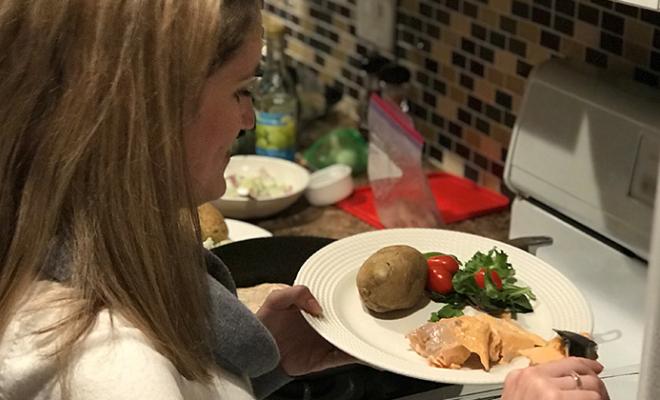This is a very familiar scenario for me: I receive a phone call from an individual with CF. “HELP! I was just told I have diabetes, and now I have no idea what to eat.”
Many people with cystic fibrosis-related diabetes (CFRD) are unsure about what to eat to manage their blood sugar levels. In addition, people with CF need to balance controlling blood sugar while avoiding unintentional weight loss, which can lead to loss of lung function.
Meal planning techniques that help manage blood sugar include counting the total carbohydrate content of a food or meal, called carbohydrate counting. However, there are two other meal planning methods that are worth discussing in detail: the glycemic index* and the glycemic load.
The glycemic index of a food indicates not only how high, but how quickly the food item can increase blood sugar.
- Foods with a high glycemic index number (70 or more) cause a quick and a high rise in blood sugar (followed by a quick drop in blood sugar for those with hypoglycemia)
- Foods with a low glycemic index number (55 or less) cause a slower and lower rise in blood sugar.
Other factors can affect a food's glycemic index number: the amount of fiber or fat in the food, how much it has been processed, the method of preparation and the specific variety of the food. In addition, some foods can offset the effect that high glycemic index foods have on blood sugar, if the foods are eaten together, as shown in the table below.
| High glycemic index food | Pair with this food to lower the glycemic index | More options |
| Rice | Butter, cheese | Stir-fried meat and vegetables |
| Potato | Sour cream, unflavored yogurt, butter | Serve in a meal with meat and vegetables |
| Pasta | Meatballs and sauce, or meat sauce | Use pasta as a side dish in a meal with meat and vegetables, or serve carbonara style with white/cream sauce |
| Bread | Peanut butter, butter | Meat or cheese sandwich, cheese toast |
| Breakfast cereal | Whole milk, half and half, full fat milk replacement such as coconut milk | In addition to the cereal and milk, eat toast with butter, peanut butter or cheese |
The glycemic index does not tell you how high your blood sugar will increase when you eat a particular amount of a food or what happens with combination foods. To figure that out, researchers came up with a second number called the glycemic load.
What is glycemic load?
The glycemic load is a number that indicates how a food will affect blood sugar based on how quickly the food delivers glucose and the actual amount of glucose in the food. The glycemic load number is a combination of glycemic index and carbohydrate content. The glycemic load of a food is considered a more realistic and accurate picture of how the food will affect blood glucose.
- Glycemic load greater than 20 is considered high
- Glycemic load less than 10 is considered low
The glycemic load of a food can change the perspective about a particular food completely. For example, carrots have a high glycemic index number (about 92), but a low glycemic load (6).
What method do you recommend to control blood sugar?
Use the method of meal planning that works best for you. Factors other than food can affect your blood sugar, such as the amount of enzymes you take and how long food remains in your stomach, and you may need to experiment. All of these options require you to read product labels and learn new skills.
Managing a special diet is hard. If your blood sugar is difficult to control -- or is out of control -- I would suggest a more defined and limited diet. If not, I encourage you to use the easiest way for you to balance and control the carbohydrates in your diet while maintaining adequate calorie intake.
Believe it or not, there's an official website for the glycemic index, maintained by the University of Sydney, that allows you to enter a food name to learn its glycemic index and glycemic load numbers. You can also sort food items based on glycemic index and/or glycemic load.
This table, originally published in the journal Diabetes Care, lists the glycemic index and glycemic load for more than 1,800 items.
I hope you have found this interesting and useful. If you have any questions, please submit them to ggarlow@partners.org, and I will try to answer them in another blog post.
*This blog is in response to specific questions from individuals with CF who are interested in knowing about the glycemic index. The glycemic index does not necessarily reflect the CF Foundation guidelines for managing CF-related diabetes.





